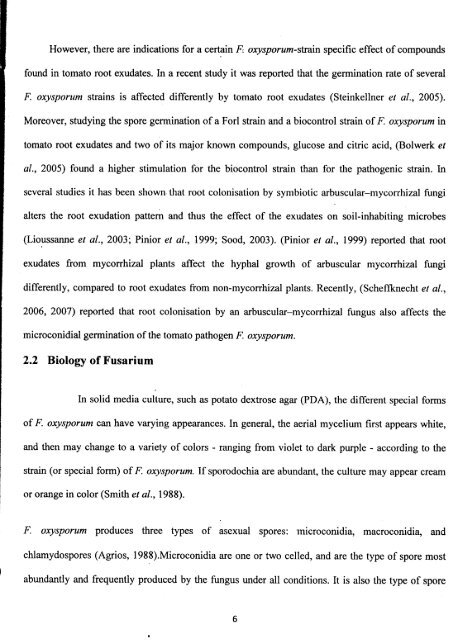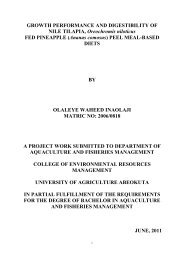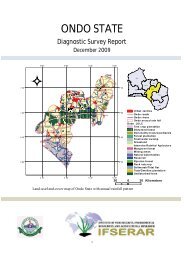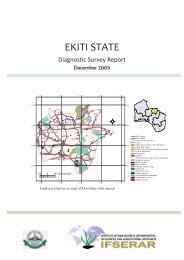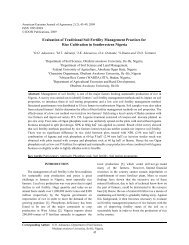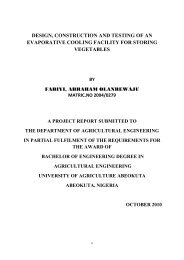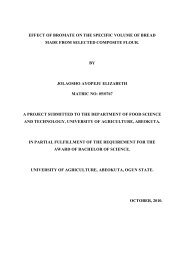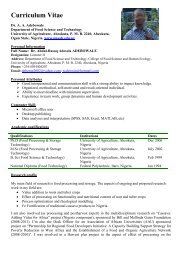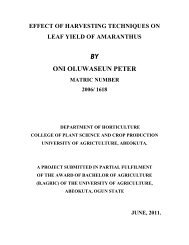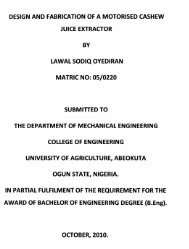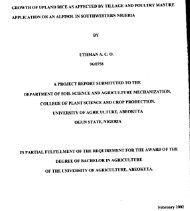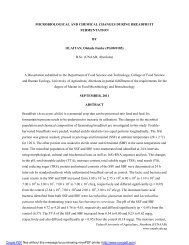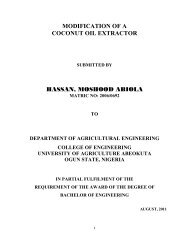SCREENING OF TOMATO ACCESSIONS FOR RESISTANCE TO ...
SCREENING OF TOMATO ACCESSIONS FOR RESISTANCE TO ...
SCREENING OF TOMATO ACCESSIONS FOR RESISTANCE TO ...
Create successful ePaper yourself
Turn your PDF publications into a flip-book with our unique Google optimized e-Paper software.
However, there are indications for a certain F: oxysporum-strain<br />
specific effect of compounds<br />
found in tomato root exudates. In a recent study it was reported that the germination rate of several<br />
F. oxysporum strains is affected differently by tomato root exudates (Steinkellner et al., 2005).<br />
Moreover, studying the spore germination of a Fori strain and a biocontrol strain of F. oxysporum in<br />
tomato root exudates and two of its major known compounds, glucose and citric acid, (Bolwerk et<br />
al., 2005) found a higher stimulation for the biocontrol strain than for the pathogenic strain. In<br />
several studies it has been shown that root colonisation by symbiotic arbuscular-mycorrhizal fungi<br />
alters the root exudation pattern and thus the effect of the exudates on soil-inhabiting microbes<br />
(Lioussanne et al., 2003; Pinior et al., 1999; Sood, 2003). (Pinior et al., 1999) reported that root<br />
exudates from mycorrhizal plants affect the hyphal growth of arbuscular mycorrhizal fungi<br />
differently, compared to root exudates from non-mycorrhizal plants. Recently, (SchefIknecht et al.,<br />
2006, 2007) reported that root colonisation by an arbuscular-mycorrhizal fungus also affects the<br />
microconidial germination of the tomato pathogen F. oxysporum.<br />
2.2 Biology of Fusarium<br />
In solid media culture, such as potato dextrose agar (PDA), the different special forms<br />
of F. oxysporum<br />
can have varying appearances. In general, the aerial mycelium first appears white,<br />
and then may change to a variety of colors - ranging from violet to dark purple - according to the<br />
strain (or special form) of F. oxysporum.<br />
If sporodochia are abundant, the culture may appear cream<br />
or orange in color (Smith et al., 1988).<br />
F. oxysporum produces three types of asexual spores: microconidia, macroconidia, and<br />
chlarnydospores (Agrios, 1988).Microconidia are one or two celled, and are the type of spore most<br />
abundantly and frequently produced by the fungus under all conditions. It is also the type of spore


